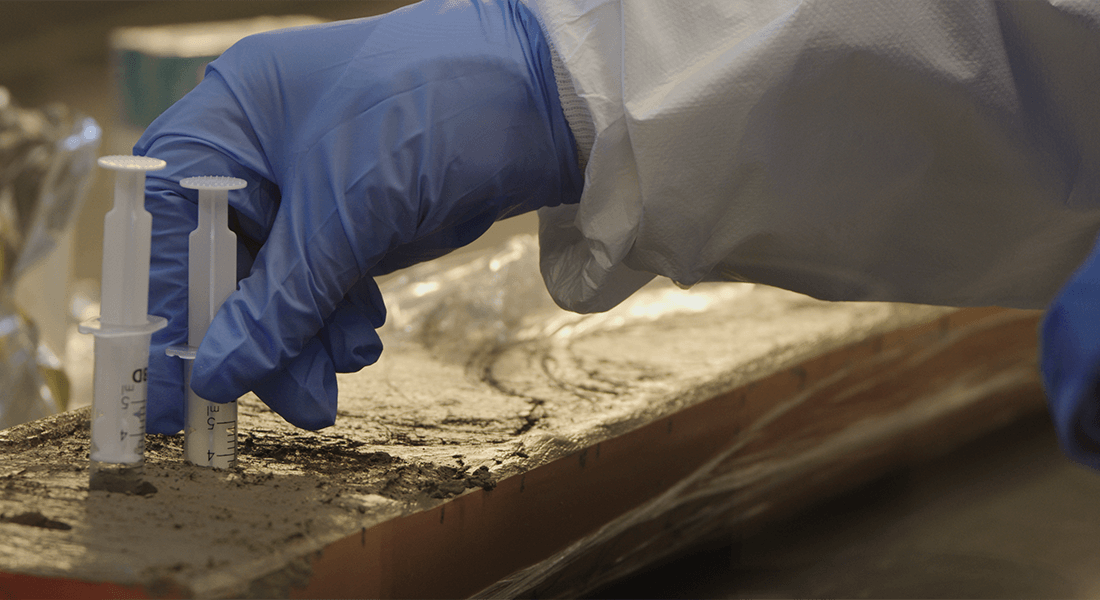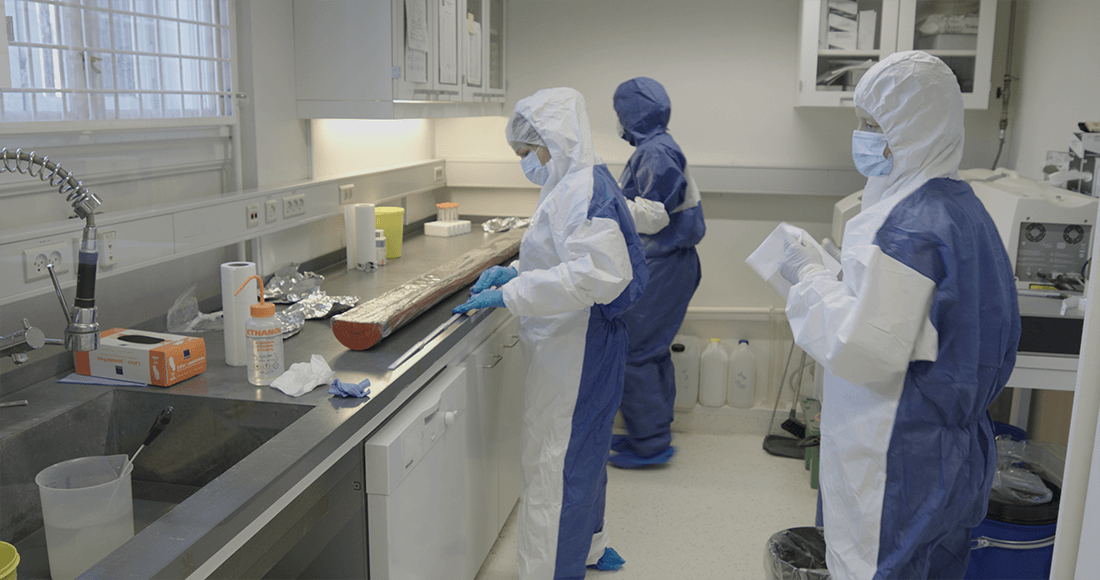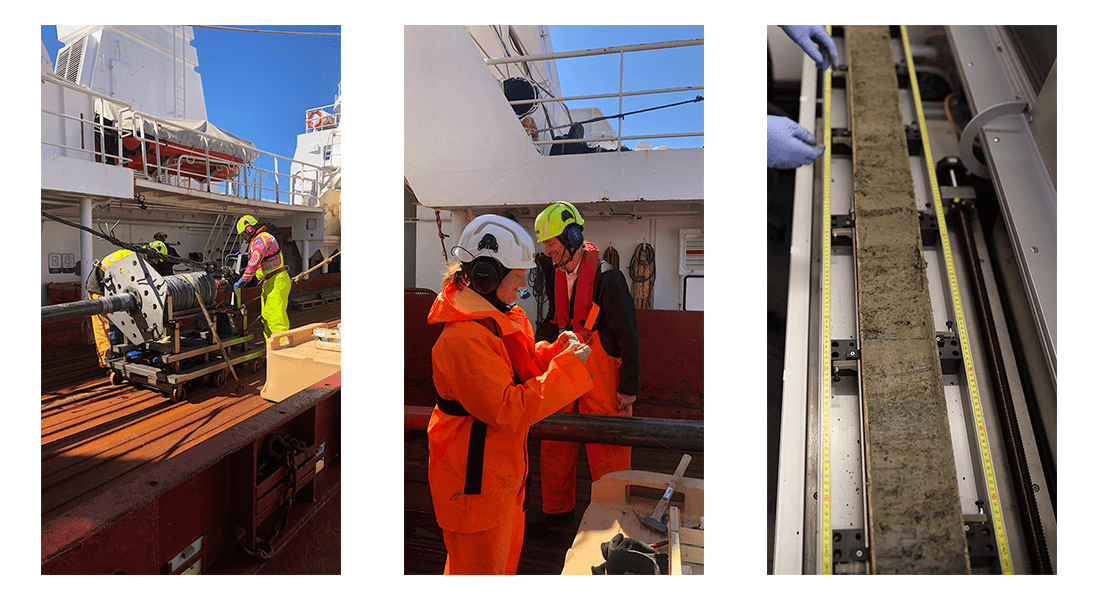40.000 years of ocean sediment sampled for DNA analysis

The first eDNA samples have been collected from a six meter long sediment core retrieved during the ROCS cruise in the North Atlantic Ocean. The samples are destined for eDNA analysis at GLOBE institute, and their analysis will indicate how ecosystems have been structured through paleo-history.
A total of 119 samples were collected from an ocean sediment core in a pristine laboratory environment at the University of Copenhagen Geological Museum last Thursday. The core; a six meter long cylinder of marine sediment, was collected from the seabed at the ROCS cruise’s northernmost coring station, on the cusp of the Irminger basin, using Aarhus University gravity corer.
The gravity corer consists of 850 kilograms lead plates mounted on top of metal barrels lined with PVC pipes and a core catcher, which collects sediment at the bottom of the coring device, attached to the lower end. As indicated by its name, the gravity corer uses gravity (as opposed to, for example, drilling) to penetrate the seafloor, and slowly accumulate ocean sediment while also preserving its stratigraphic layers. According to Dr Rebecca Jackson, paleoceanographer and ROCS postdoc, radiocarbon dating of evidence from the core catcher suggests that the core dates back approximately forty thousand years.
“By gathering evidence from the sediment cores for eDNA analysis, we are sampling for what we cannot see,” says Rebecca. “But looking at the core and describing in detail what we already see; for example, the layering and changes in colour and texture, is very exciting. What does it all mean?” She notes that these types of sediments can contain information about how they were deposited, which is interesting as it sheds light on the conditions that bring sediments to specific regions and thus give important context.

Collecting samples for eDNA analysis is a sensitive process which requires a sterile environment and equipment to prevent contamination and ensure accurate analysis. In a laboratory setting, the sediment core is split lengthwise where one half is archived while the other is sampled. The sampling is done by using syringes, that have been sterilised to prevent contamination but preserve DNA, to draw evenly spaced samples which will provide a window to past ecosystems and how they have changed through time.
Dating of the core layers and analysing the DNA present in each layer allows the description of ecosystems through paleo-history and how they were structured. This will also allow scientists with the ROCS centre to shed light on marine plankton ecosystem structure through time which, when contextualized with climate conditions, will enable testing of the hypothesis that changes in phytoplankton activity and composition may be related to changes in atmospheric CO2 concentrations.

